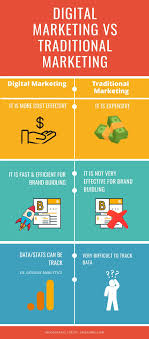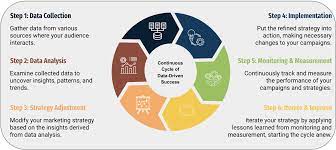The Cost of Web Development: Factors to Consider
Web development is a crucial investment for businesses looking to establish a strong online presence. However, determining the cost of web development can be a complex process influenced by various factors.
Factors Affecting Web Development Costs:
- Complexity of the Website: The complexity of the website, including features, functionality, and design elements, plays a significant role in determining the cost.
- Customization: Customized websites require more time and effort from developers, resulting in higher costs compared to using pre-designed templates.
- Content Management System (CMS): The choice of CMS can impact costs. Popular CMS platforms like WordPress may have lower development costs due to their widespread use and available resources.
- Responsive Design: Ensuring that the website is responsive across different devices adds to the development cost but is essential for user experience.
- SEO Integration: Incorporating SEO strategies during development can increase costs but is crucial for optimizing search engine rankings.
- E-commerce Functionality: Websites with e-commerce capabilities require additional features such as payment gateways and product listings, contributing to higher costs.
Tips for Managing Web Development Costs:
To effectively manage web development costs, consider the following tips:
- Define Your Requirements: Clearly outline your website’s goals and features to provide developers with a clear understanding of your needs.
- Research and Compare Quotes: Obtain quotes from multiple web development agencies and compare their services and pricing structures before making a decision.
- Prioritize Features: Identify essential features that are critical for your website’s success and focus on incorporating them within your budget constraints.
- Maintain Communication: Regular communication with developers can help prevent misunderstandings and ensure that the project stays within budgetary limits.
- Incorporate Scalability: Consider future scalability requirements to avoid significant redevelopment costs as your business grows.
In conclusion, understanding the various factors influencing web development costs and implementing effective cost management strategies are essential for businesses seeking to create impactful websites within their budget constraints.
9 Key Advantages of Web Development: Tailored Solutions, Scalability, and Cost-Effective Strategies for Business Growth
- 1. Customization options allow tailored solutions to meet specific business needs.
- 2. Scalability ensures that websites can grow and adapt to changing business requirements.
- 3. Improved user experience through responsive design boosts customer engagement.
- 4. Cost-effective solutions are available for businesses of all sizes and budgets.
- 5. Integration of SEO strategies enhances online visibility and search engine rankings.
- 6. E-commerce functionality enables businesses to sell products or services online efficiently.
- 7. Access to a global audience expands market reach and potential customer base.
- 8. Regular updates and maintenance services ensure website performance and security.
- 9. Collaboration with experienced web developers results in high-quality, professional websites.
Six Financial Drawbacks of Web Development: Navigating Investment, Maintenance, and ROI Challenges
- 1. High Initial Investment
- 2. Additional Costs for Maintenance
- 3. Cost Overruns
- 4. Hidden Costs
- 5. Limited Budget Flexibility
- 6. Impact on ROI
1. Customization options allow tailored solutions to meet specific business needs.
Customization options in web development offer a valuable advantage by enabling tailored solutions to address specific business requirements. Businesses can customize their websites to align with their branding, functionality, and user experience goals. This level of customization ensures that the website not only meets the unique needs of the business but also stands out in a competitive online landscape. By incorporating personalized features and design elements, businesses can create a distinct online presence that resonates with their target audience and enhances overall user engagement. The ability to tailor web development solutions to specific business needs underscores the importance of customization in achieving digital success.
2. Scalability ensures that websites can grow and adapt to changing business requirements.
Scalability in web development cost ensures that websites have the flexibility to expand and evolve in response to changing business needs. By designing websites with scalability in mind, businesses can easily incorporate new features, functionalities, and content as their operations grow. This proactively addresses future requirements, saving time and resources that would otherwise be spent on extensive redevelopment efforts. Scalable websites not only adapt to increasing traffic and user demands but also provide a solid foundation for long-term success and sustainability in the dynamic digital landscape.
3. Improved user experience through responsive design boosts customer engagement.
One significant advantage of investing in web development is the enhancement of user experience through responsive design, leading to increased customer engagement. By ensuring that websites are optimized for various devices and screen sizes, businesses can provide a seamless and consistent browsing experience for their users. Responsive design allows content to adapt dynamically, improving accessibility and usability across desktops, tablets, and smartphones. This user-centric approach not only attracts visitors but also encourages them to engage with the website longer, ultimately fostering stronger connections with customers and driving business growth.
4. Cost-effective solutions are available for businesses of all sizes and budgets.
Cost-effective solutions in web development offer businesses of all sizes and budgets the opportunity to establish a strong online presence without breaking the bank. Whether it’s a small startup looking to create a simple yet effective website or a large corporation in need of complex web applications, there are cost-effective options available that cater to diverse business needs. By leveraging affordable web development solutions, businesses can maximize their online visibility and reach their target audience effectively, regardless of their budget constraints.
5. Integration of SEO strategies enhances online visibility and search engine rankings.
The integration of SEO strategies in web development plays a crucial role in enhancing online visibility and improving search engine rankings. By incorporating SEO best practices such as keyword optimization, meta tags, and responsive design, websites can attract more organic traffic and reach a wider audience. This proactive approach not only boosts the website’s visibility but also increases its chances of ranking higher on search engine results pages, ultimately driving more targeted traffic and potential customers to the site.
6. E-commerce functionality enables businesses to sell products or services online efficiently.
E-commerce functionality within web development offers businesses a powerful platform to efficiently sell products or services online. By incorporating features such as secure payment gateways, user-friendly product listings, and streamlined checkout processes, businesses can reach a global audience and facilitate seamless transactions. This capability not only expands market reach but also enhances customer convenience, driving sales and revenue growth. E-commerce functionality is a vital pro of web development cost that empowers businesses to capitalize on the vast opportunities of the digital marketplace with ease and efficiency.
7. Access to a global audience expands market reach and potential customer base.
One significant advantage of web development cost is the access it provides to a global audience, expanding market reach and potential customer base. By establishing an online presence through a well-developed website, businesses can transcend geographical boundaries and connect with customers worldwide. This increased accessibility not only enhances brand visibility but also opens up opportunities for growth and expansion into new markets. With the ability to reach a diverse audience, businesses can tap into new demographics and establish a strong foothold in different regions, ultimately driving revenue and fostering long-term customer relationships.
8. Regular updates and maintenance services ensure website performance and security.
Regular updates and maintenance services play a crucial role in ensuring the performance and security of a website. By consistently updating software, plugins, and security measures, web developers can address vulnerabilities, improve functionality, and enhance user experience. These proactive measures not only help in preventing potential cyber threats but also contribute to the overall longevity and reliability of the website. Investing in regular updates and maintenance services is a proactive approach that can save businesses from costly downtime and security breaches in the long run.
9. Collaboration with experienced web developers results in high-quality, professional websites.
Collaborating with experienced web developers is a significant advantage when it comes to web development costs. Their expertise and knowledge in the field ensure the creation of high-quality, professional websites that not only meet but exceed expectations. Experienced developers bring a wealth of skills and insights to the table, allowing for innovative solutions and seamless execution of design and functionality. By working closely with seasoned professionals, businesses can achieve a polished online presence that reflects their brand identity and resonates with their target audience, ultimately leading to greater success in the digital realm.
1. High Initial Investment
One notable con of web development cost is the high initial investment it demands, particularly for intricate or customized projects. Businesses embarking on web development endeavors may face substantial upfront expenses to bring their vision to life. Complex functionalities, unique design elements, and tailored features often necessitate a considerable financial commitment at the project’s outset. This high initial cost can pose a challenge for companies with limited budgets or those looking to allocate resources strategically across various areas of their operations.
2. Additional Costs for Maintenance
One significant con of web development cost is the additional expenses associated with maintenance and updates. While the initial development phase may involve a substantial investment, ongoing maintenance is crucial to ensure the website’s functionality, security, and performance. Regular updates to software, plugins, and content management systems are necessary to keep the website up-to-date and secure from potential vulnerabilities. These continuous maintenance tasks can lead to unexpected costs over time, making it essential for businesses to budget for ongoing support and upkeep to maintain the effectiveness of their online presence.
3. Cost Overruns
Cost overruns in web development projects can be a significant challenge for businesses, as they may exceed budget estimates due to unforeseen complexities or changes in requirements during the development process. These unexpected factors can lead to additional time and resources being allocated, resulting in higher costs than initially planned. Managing cost overruns requires careful monitoring of project progress, proactive communication between stakeholders, and a flexible approach to adapt to changing circumstances while minimizing financial impacts. By addressing potential challenges early on and implementing effective cost control measures, businesses can mitigate the risks associated with cost overruns and ensure successful completion of web development projects within budget constraints.
4. Hidden Costs
Hidden Costs in web development can catch businesses off guard, as expenses like hosting fees, domain registration, and third-party plugin licenses may not be immediately evident but significantly contribute to the overall cost. These additional expenses, often overlooked in initial budgeting, can impact the financial feasibility of a web development project. It is crucial for businesses to thoroughly assess and account for these hidden costs to ensure transparency and avoid unexpected financial burdens as the project progresses.
5. Limited Budget Flexibility
Limited Budget Flexibility is a significant con of web development cost as strict financial constraints can restrict the range of features and functionalities that a website can incorporate. When working with a limited budget, businesses may have to prioritize essential elements over additional enhancements, potentially compromising the overall user experience and competitiveness of the website. This limitation can hinder the ability to implement innovative solutions or advanced technologies that could elevate the website’s performance and engagement levels. As a result, businesses must carefully balance their budgetary restrictions with their strategic objectives to ensure that they achieve the desired outcomes within financial limitations.
6. Impact on ROI
The impact on ROI is a significant con of high web development costs. When the expenses associated with web development outweigh the returns on investment (ROI) generated by the website, it can have a detrimental effect on the overall profitability of the project. Businesses must carefully evaluate the cost-benefit ratio of web development to ensure that the financial resources invested yield a satisfactory ROI. Failure to achieve a positive ROI can result in financial strain and hinder the success of the project in achieving its intended goals and objectives.




